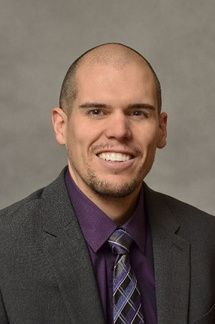- Safety & Recalls
- Regulatory Updates
- Drug Coverage
- COPD
- Cardiovascular
- Obstetrics-Gynecology & Women's Health
- Ophthalmology
- Clinical Pharmacology
- Pediatrics
- Urology
- Pharmacy
- Idiopathic Pulmonary Fibrosis
- Diabetes and Endocrinology
- Allergy, Immunology, and ENT
- Musculoskeletal/Rheumatology
- Respiratory
- Psychiatry and Behavioral Health
- Dermatology
- Oncology
Older Americans Still Struggle to Afford their Medications, Study Finds
Financial hardship was more likely to be reported by older patients who don’t have insurance, take multiple medications, and have a low annual household income.
Despite an increase in the number of older Americans who have insurance coverage, many still cannot afford their prescriptions, according to a new study published in the Journal of Managed Care + Specialty Pharmacy.
The study found that 20% of older adults reported financial hardship from prescription drug purchases in 2021. The lack of prescription drug coverage, taking more than five prescription drugs daily, and a low annual household income contributed to the inability to afford their medication.
Anthony W. Olson, Ph.D., Pharm.D.

Led by Anthony W. Olson, Ph.D., Pharm.D., an adjunct assistant professor, department of pharmacy practice and pharmaceutical sciences in the College of Pharmacy at University of Minnesota in Duluth, investigators found that 5% of older adults lacked prescription drug coverage in 2021, continuing a downward trend from 32% in 1998, 29% in 2001, and 9% in 2015.
But 20% of older adults reported financial hardship from prescription drug purchases in 2021, compared with 19% in 1998 and 31% in 2001 — before the implementation of Medicare Modernization Act of 2003 (MMA) and the Affordable Care Act of 2010 (ACA) — and 36% in 2015, before the Medicare Part D prescription drug insurance coverage gap (“the donut hole”) was fully closed in 2020 by the ACA.
The donut hole was a temporary limit on what the drug plan would cover. Although the coverage gap is now considered closed, patients still face a cost-share of 25% after a deductible is met. This continues until total costs of prescriptions reaches a specific threshold.
In this study, investigators obtained and assessed the results from three cross-sectional national surveys of U.S. older adults from 1998, 2001, and 2015, which showed an increase in difficulty affording prescription drugs between the years prior the MMA and halfway through the implementation of the ACA. This, they said, indicates that cost-sharing mechanisms can impact patients’ ability to afford their medications, which is linked to cost-related nonadherence and poorer health outcomes. The data for the 2021 survey were obtained from National Consumer Survey on the Medication Experience and Pharmacists’ Roles.
They found that insurance coverage provided through the Medicare Modernization Act and the Affordable Care Act, as well as the closure of the donut hole, helped many older Americans afford prescription drugs.
“This finding, together with continued growth in proportional enrollment of older adults in prescription drug insurance plans across the survey years, suggests that lacking drug coverage is not a sufficient predictor of cost-related nonadherence for older adults. The number of drug prescriptions taken daily and annual household income also make for informative predictors,” investigators wrote.
One limitation of this study is that it relied on patient self-reporting, which investigators said leaves the perceptions of what constitutes financial hardship open to patient interpretation.
Payers Recognize the Benefits, but Still See Weight Loss Drugs through a Cost Lens
April 12th 2024Jeffrey Casberg, M.S., R.Ph., a senior vice president of clinical pharmacy at IPD Analytics LLC, a drug intelligence firm that advises payers and pharmaceutical companies, talks about how payers are thinking about weight-loss drugs.
Humira Biosimilars Have a Slow Uptake, Finds Samsung Bioepis Report
April 8th 2024Caps on Medicare Part D cost sharing as a result of the Inflation Reduction Act, could reduce members’ financial incentive for switching to a biosimilar, suggests the newest Samsung Bioepis Quarterly Biosimilar Market Report.
